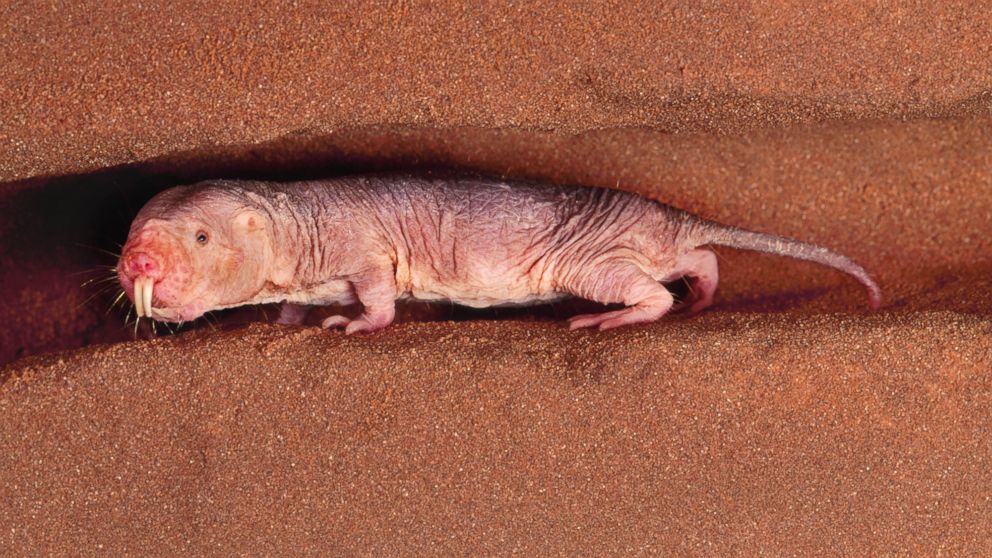How This Naked Mole Rat Could Help You Live Longer
Its secrets could lead to longer life, cancer cures.

May 4, 2014 — -- East Africa's naked mole rat may be one of the ugliest critters on the planet, but to scientists around the world it is beautiful.
Numerous labs have invested millions of dollars and thousands of hours in an ongoing effort to understand the animal's amazing physiological, biochemical and genetic tools that allow it to live under impossible conditions for a very, very long time.
It's not that they care all that much about a mouse-sized subterranean rat that looks like a soggy cigar with fangs. It's just that if we could fully unravel its mysteries we might be able to eliminate cancer, prevent strokes, reduce pain, keep our brains working longer, and beat back the debilitating effects of the aging process.
And maybe we could live for 300 years.
The naked mole rat lives about six feet underground, in caverns and tunnels that can stretch on for two miles, in air that is so putrid and oxygen-deprived it would be fatal or lead to irreversible brain damage in any other mammal, according to scientists at the University of Illinois in Chicago, one of several premier research institutions dedicated to figuring out how the naked mole rat does that sort of thing.
While its closest relatives, mostly mice and rats, usually live for only about three years, the naked mole rat can hang on for more than 30 years, and remain healthy and presumably happy right up to the end. If we could do that, we would measure our lives in centuries, not decades.
We're a long ways from that, of course, but scientists are making considerable progress in understanding how the mole rat does it. Some of what they learn clearly could have implications for humans; some of it probably will not.
It's kind of a new era in various lines of research.
"A lot of cancer research focuses on animals that are prone to cancer. We think it's possible to learn strategies for preventing tumors by studying animals that are cancer-proof," Vera Gorbunova of the University of Rochester said last year in releasing her study.
Her group has found that the rat uses a uniquely modified gene (HAS2) to produce a chemical known as HMW-HA, which appears to play a role in protecting the animal from cancer and some types of pain.
The Barshop Institute at the University of Texas Health Science Center, San Antonio, has the largest collection of naked mole rats in the United States -- 2,000 that thrive in a network of humid tubes and cages similar to their natural habitat. The institute, directed by Rochelle Buffenstein, is center stage for several research projects. According to Buffenstein, her research is focusing on age-related changes in the naked mole rat compared to other similar animals.
Karl Rodriguez, a member of Buffenstein's team, presented research at the Federation of American Societies for Experimental Biology a few days ago suggesting that the rat's longevity and continued good health is due to the presence of a specific protein (HSP25) that is partly responsible for keeping the rat's cells healthy.
"If we can understand how HSP25 levels are regulated (in the naked mole rat), what its function is and how it contributes to cell health, we might find ways to use this protein to combat devastating age-related diseases" like Alzheimer's and Parkinson's, Rodriguez said in releasing that study.
Significantly, that protein is far more prevalent in the naked mole rat than in other mole rats and several related species, establishing correlation but not necessarily causation.




